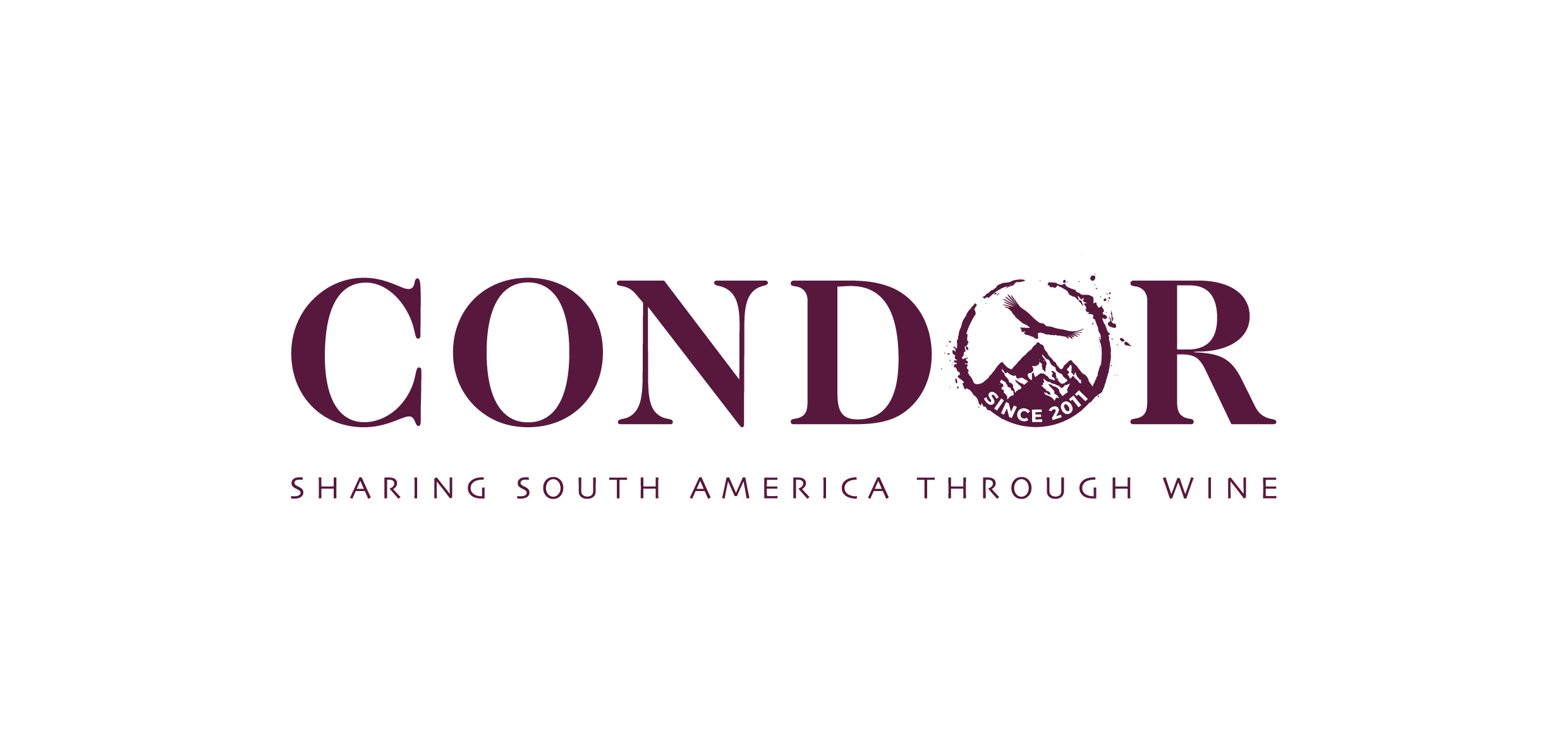Bodega Catena Zapata, one of Argentina's classics, owes much of its success to the pioneering spirit of women like sisters Laura Catena, Adrianna Catena, and their great, grandmother Anna Catena. Their bravery, passion, and deep respect for land have shaped the winery's reputation for putting Argentine Malbec on the map. Today, approximately 70% of Bodega Catena Zapata's vineyards are planted with Malbec.
At a recent tasting in London’s Maison Francois, Laura Catena shared the history, philosophy, and unique practices of Bodega Catena Zapata, highlighting its contributions to the world of wine.
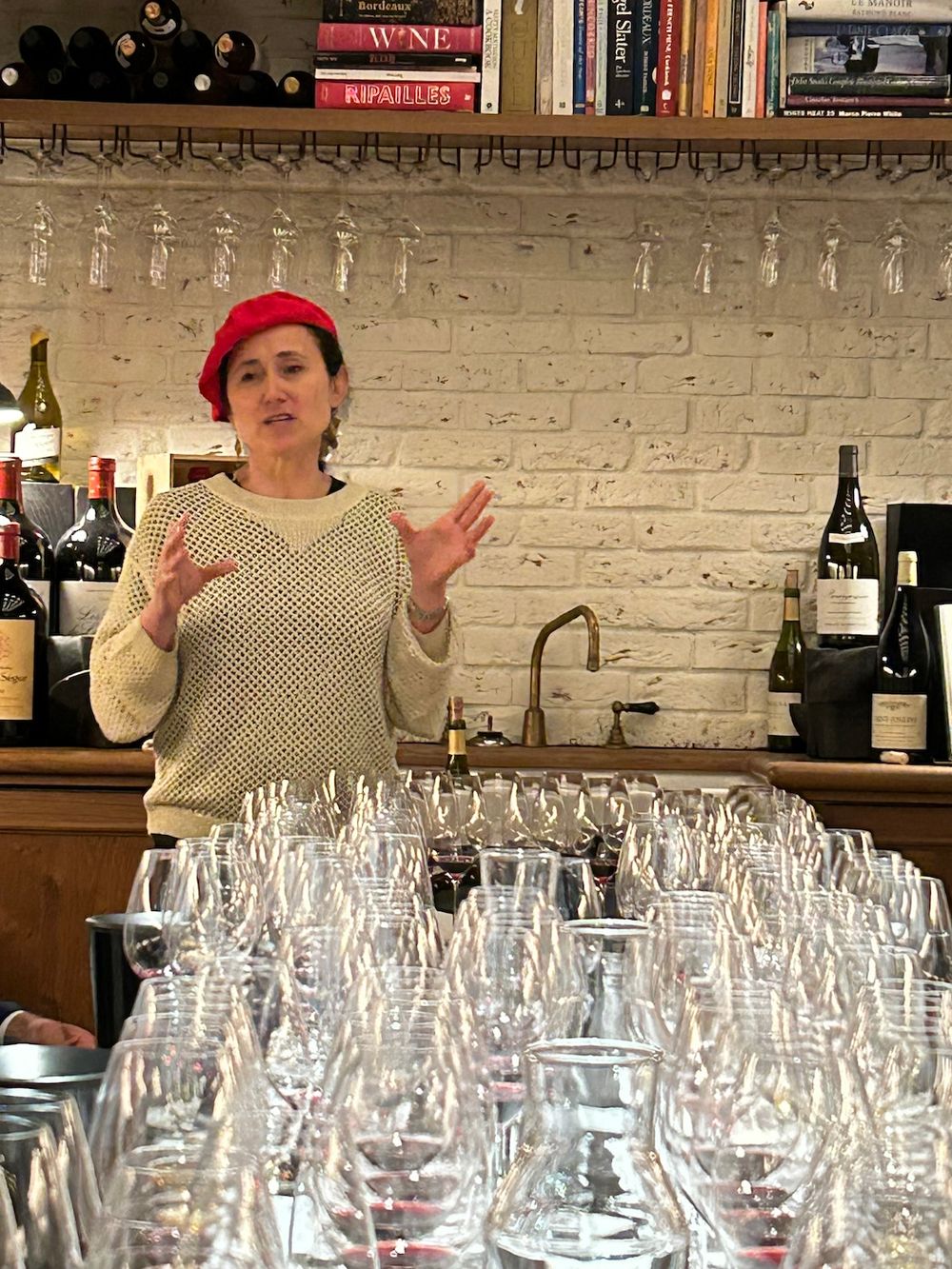
"I thought I would save the world with medicine. Today, I am saving more lives with wine," Laura Catena
A legacy of innovation and tradition
Founded in 1902 by Italian immigrant Nicola Catena, Bodega Catena Zapata has a storied history rooted in Mendoza's rich winemaking tradition. However, it was Nicola's grandson, Nicolás Catena Zapata, who immensely contributed to pioneering the Argentine wine industry.
Nicolás took over the family business in the 1960s and focused on improving distribution within Argentina during the 1970s. When Argentina’s political and economic situation was particularly gloomy in the early 1980s, Nicolás left to become a visiting professor of economics at the University of California-Berkeley. While there, he regularly visited California wineries, especially in Napa Valley, and returned to Argentina obsessed with the idea of making wines that could compete with the best in the world.
Inspired by Napa Valley, Nicolás introduced modern viticulture techniques and focused on high-altitude vineyards, significantly improving the quality of Argentine wines.
Today, Bodega Catena Zapata has approximately 600 hectares of vineyards located in several key regions of Mendoza, including Luján de Cuyo and the Uco Valley, where the high-altitude Adrianna Vineyard is situated.
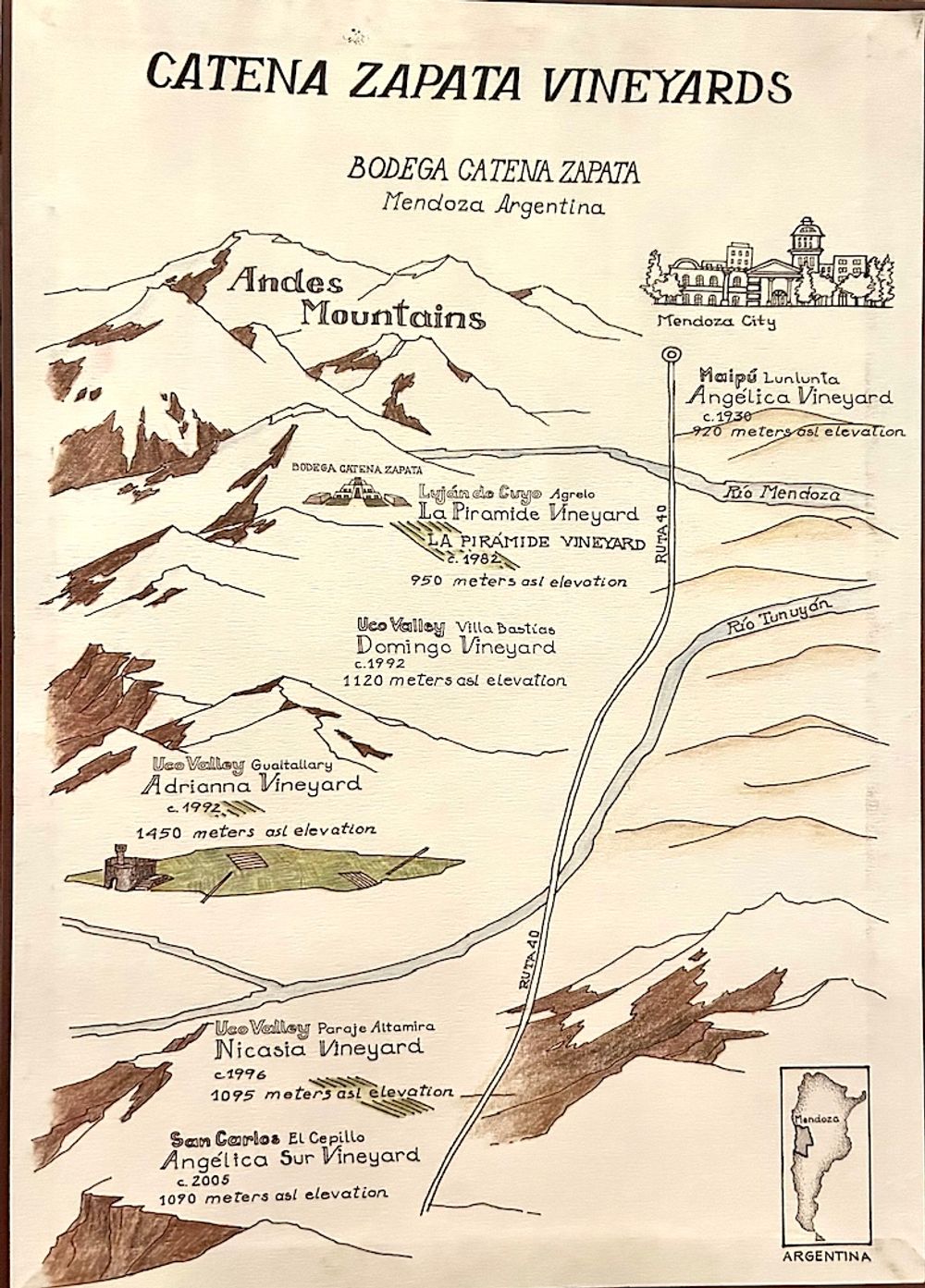
Laura Catena, Nicolás's daughter, a Harvard and Stanford-trained biologist and physician, managing director of Bodega Catena Zapata, and the founder of the Catena Institute of Wine in Argentina, has been instrumental in continuing this legacy of innovation. A fourth-generation vintner, Laura has combined her scientific background with her family's winemaking passion and heritage to push the boundaries of what Argentine wine can achieve.
“I was going to medical school,” she says, “and I wanted to save the world and I thought I would save the world with medicine. Today, I am confident that I am saving more lives with wine, 100 percent! Really, the joy that wine brings is doing much better. I'm a much better person as a professional today than I was before.”
Her approach is a blend of meticulous scientific research and a profound respect for the land and its people.
The philosophy of quality and sustainability
At Bodega Catena Zapata, the philosophy is simple: quality and sustainability go hand in hand. This belief is evident in the winery's practices, from the vineyard to the bottle. Laura Catena emphasises the importance of taking care of the workers, many of whom have spent their entire careers at the winery.
"If there's something that's really hard on people's bodies and will definitely be replaced, we should just buy the machine," she says, underscoring the balance between technology and human touch.
This commitment extends to their community as well. The winery provides housing for its workers, creating a stable and supportive environment that fosters long-term employment and loyalty.
"We have 187 houses, and we build neighborhoods. If somebody works with us, we give them a house, and they can live in that house," Laura explains.
In discussing their sustainable practices, Laura highlighted: "We plant grasses around the vineyard now that don't need irrigation. One of our winemakers joked that our vineyard grass looks like an English lawn because of how green it looks."
Embracing natural winemaking
Catena Zapata wines reflect personality and character, according to Laura, "Every batch of grapes gets treated as its own individual person." Its line of natural wines, La Marchigiana, includes varieties such as Malbec, Bonarda, and Criolla. These wines are made with minimal intervention, without added sulfites, and using natural yeast present in the winery's environment. This approach allows the true character of the grape and terroir to shine through.
Laura Catena is keenly aware of the delicate balance required in natural winemaking.
"If you ever use yeast in a winery, it's in the air. So we don't inoculate, but there's probably some yeast going around that is not the main yeast alone that is going with this wine," she notes.
A method that reflects respect for nature's role in the winemaking process and a commitment to preserving the authenticity of their wines.
Catena’s approach to Malbec
In discussing the evolution of winemaking techniques, Laura Catena shared a pivotal shift in the bodega’s approach to Malbec.
"Today we make Malbec more like Pinot Noir. We used to treat it as a Bordeaux variety, with longer maceration. Now we do whole cluster fermentation which helps with the texture and shorter maceration. We switched to this technique in the early 2000s."
This change has enhanced the wine's texture and complexity, aligning it more closely with the finesse and elegance often associated with Pinot Noir.
Next steps for the winery
Looking ahead, Bodega Catena Zapata continues to innovate and adapt to changing conditions. Climate change poses significant challenges, particularly in regions like eastern Mendoza, which has experienced warming trends. However, the Uco Valley, where many of their vineyards are located, has remained relatively stable, offering a buffer against these changes.
Laura Catena is also focused on reviving traditional viticultural areas. By reintroducing varieties that thrive in warmer conditions, such as Criolla as well as preserving old vines, the winery aims to sustain the region's winemaking heritage while adapting to new realities.
Tasting the new wines from Bodega Catena Zapata
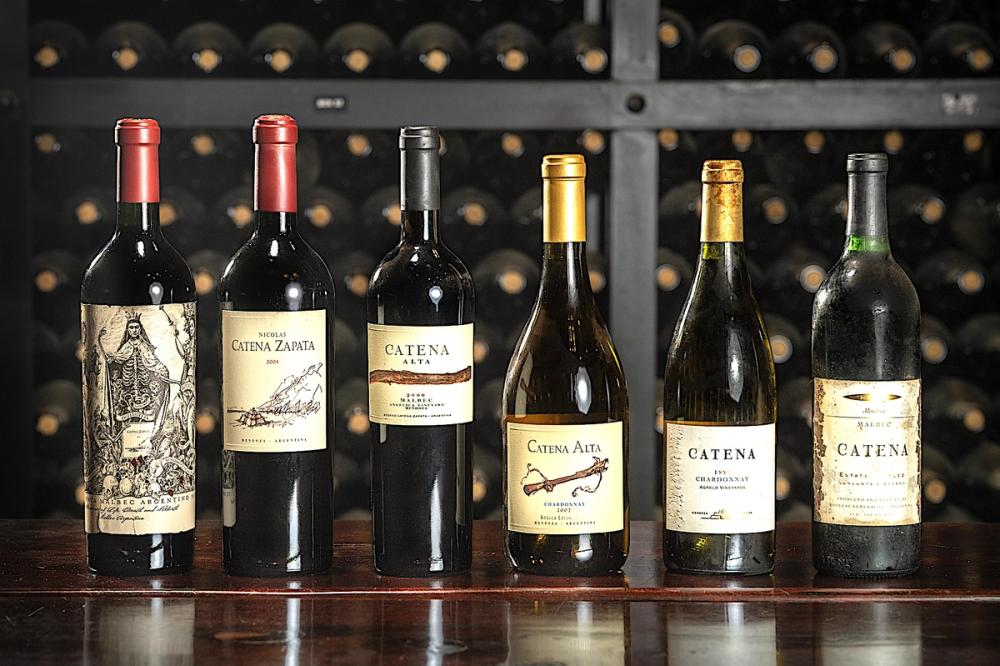
Adrianna Vineyard, White Stones Chardonnay 2020
Just golden in colour, this wine offers aromas of honeysuckle, grapefruit peel, apple, and olives. On the palate, it is muscly and viscous yet smooth, with electric acidity and bright elegance. This wine comes from the Adrianna vineyard, planted in 1930 at 1450m elevation. ABV 12.5%, acidity 7.79 g/l, pH 3.0.
Catena Chardonnay 1999
This elegantly oxidative white displays walnut skin, oloroso character, and mouth-filling creaminess. Notes of apple strudel, balsamic, dried fruits, nuts, and tobacco reveal a serious structure. From the Agrelo vineyard at 950m elevation. ABV 13.5%, acidity 5.92 g/l, pH 3.27.
Catena Alta Chardonnay 2007
Intense greenish colour with a light yellow undertone, this wine offers marzipan, toastiness, and chamomile aromas. On the palate, ripe mango, peaches, and raisins blend with vivid acidity and a long, savory finish. From Adrianna and Domingo vineyards at 1450m and 1120m elevation, respectively. ABV 14%, acidity 6.3 g/l, pH 3.4.
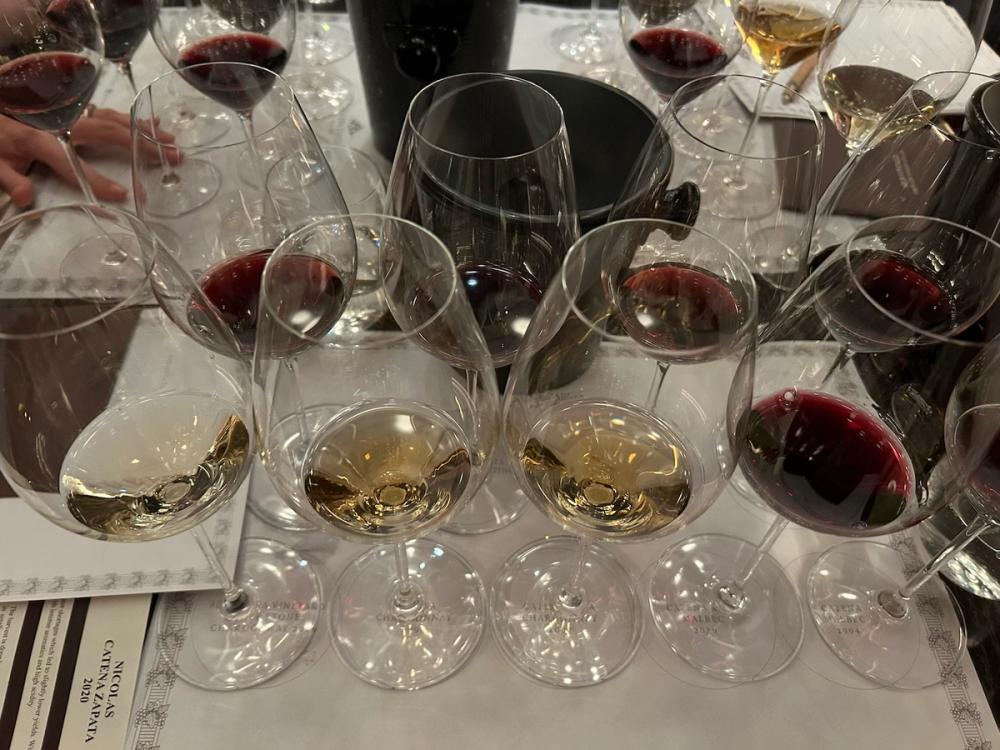
Catena Alta Malbec 2020
Violet and blackberries dominate the nose with hints of vanilla. Vibrant fruit flavors with intense energy, pepper, spice, and earthy notes define this expressive wine. A blend of five vineyards ranging from 920-1450m. ABV 13.8%, acidity 6.25 g/l, pH 3.55.
Catena Malbec 1994
The first Zapata wine exported, this Malbec shows browning purple fading to ruby, with vanilla, brambles, lilies, and graphite on the nose. Ripe fruit flavours include blackberry jam, liquorice, raisins, and nettles, with balanced tannins and a focused palate. From Lunlunta vineyard at 920m elevation. ABV 13%, acidity 5.8 g/l, pH 3.5.
Catena Alta Malbec 2000
Deep, dark violet in colour, this wine is like a slow tango dance – energetic yet refined. It features high altitude minerality, black fruit, and fine-grained tannins with a long finish. From Angelica vineyard at 920m elevation. ABV 14%, acidity 5.85 g/l, pH 3.6.
Catena Zapata Malbec Argentino 2004
Refined and elegant, this wine combines vanilla with violets, smooth tannins, dark chocolate, and coffee. From Adrianna and Nicasia vineyards at 1095-1450m elevation. ABV 14%, acidity 5.7 g/l, pH 3.72.
Nicolás Catena Zapata 2020
Brambles on the nose with blackberry, cranberry, and blackcurrant. The palate shows ripe black fruits, liquorice, chocolate, violet, and herbal undertones. Vibrant tannins and a long, layered finish. From Adrianna Cru at 1450m and Nicasia Cru at 1095m. ABV 13.9%, acidity 5.7 g/l, pH 3.64.
Nicolás Catena Zapata 2004
Rosehip, thyme, frankincense, vanilla, and smoke, with a fruit bomb explosion of black cherries, blackberry, and cranberry jam. Fine-grained tannins and balanced acidity. A blend of four vineyards from Lujan de Cuyo and Valle de Uco. ABV 14%, acidity 5.8 g/l, pH 3.72.
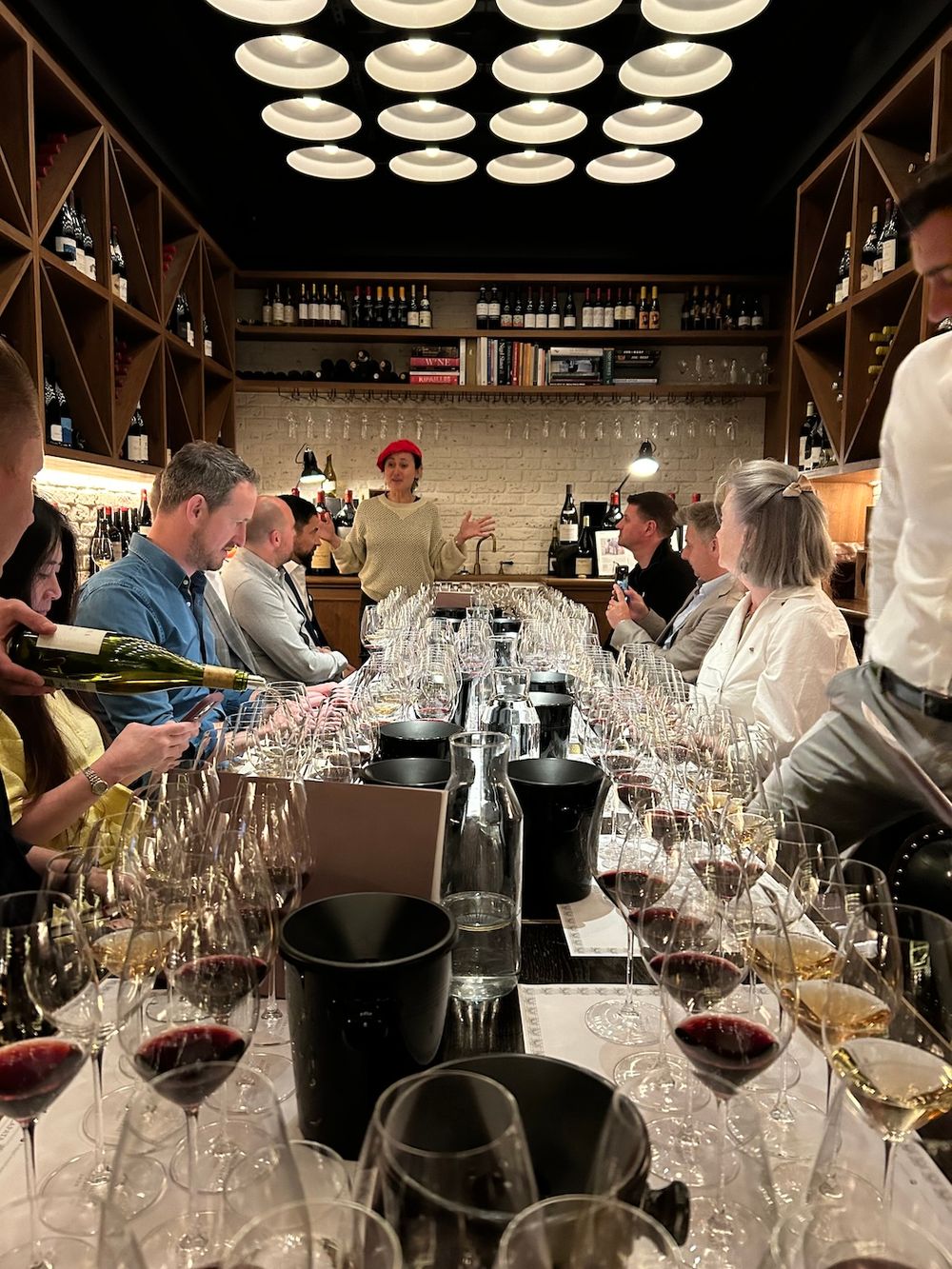
Bodega Catena Zapata lunch, Maison Francois, July 2024
Bringing history to life
Laura Catena joked, “You Europeans think you are ‘old world’, but we have 2,000 years of Malbec history behind us!” Laura's remark was then demonstrated by UK actress Christina Baston performing a 20-minute one-woman show titled As Wine Flows By written by Adrianna Catena’s husband. The play narrates the history of the Malbec grape through the perspectives of four influential women who significantly impacted its journey.
The story spans from the Roman Empire to Eleanor of Aquitaine's championing of Malbec in France, to its introduction in Argentina by immigrants like Anna Catena (Laura’s great-grandmother), and its survival through the phylloxera epidemic. The performance highlights the grape’s resilience and the Catena family's role in its revival and prominence in Argentine wine.
Nicolás’s dream was to make Argentine wines that could stand with the best of the world. Laura’s dream is that every wine collector in the world has a section for Argentine wine in their cellar - and where there is a will, there is a way.
* You can find out more about Bodega Catena Zapata at its website here.


